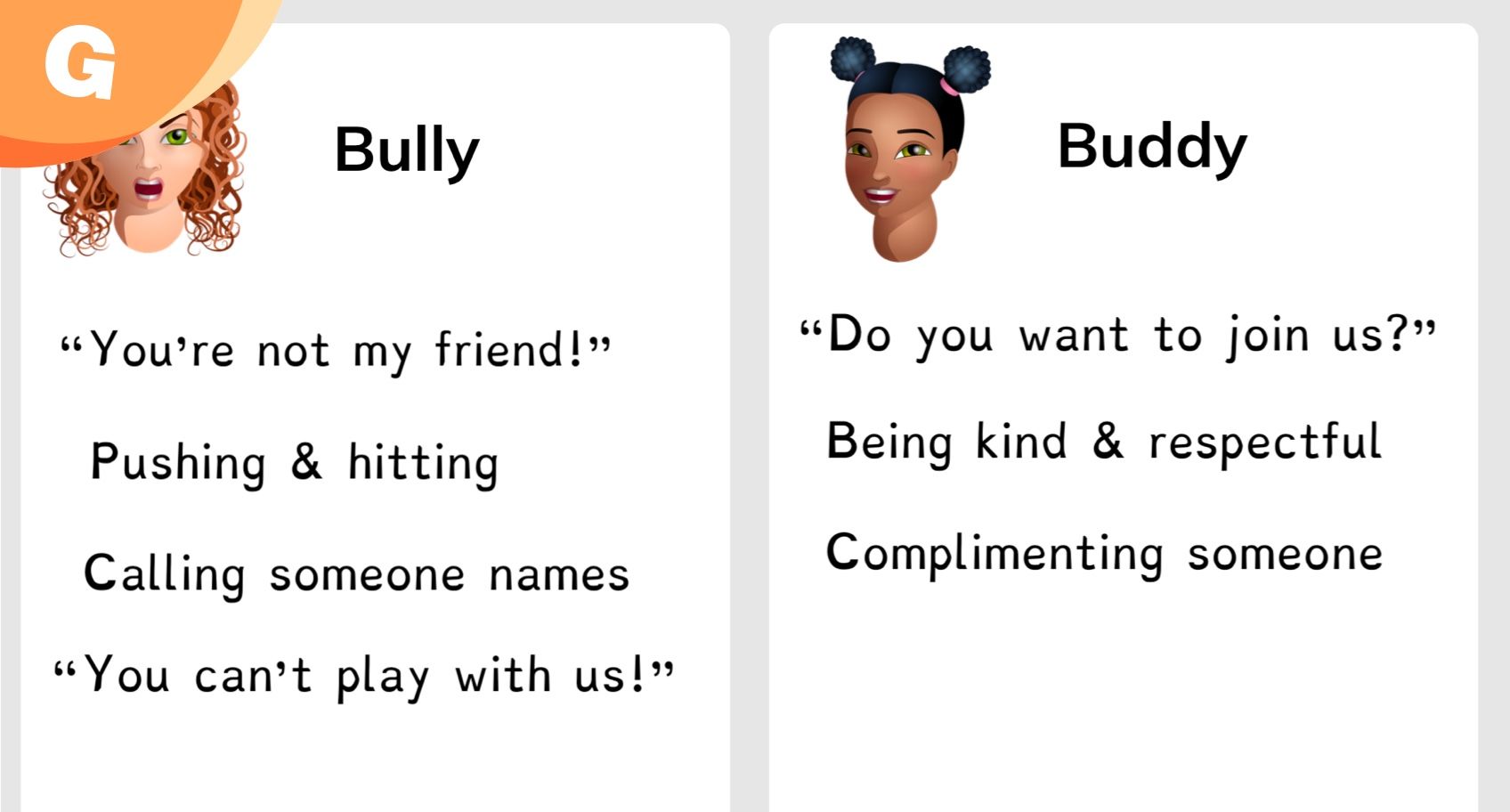
Bullying Prevention Activities for in School and Outside of It
October is Bullying Prevention Month, and it’s never a bad time to review bullying prevention activities that can help students understand why bullying is bad and what strategies they can use to prevent it.
At the core of bullying prevention is social emotional learning, or the process of empathizing with others as well as honestly assessing our own emotions. Find our social-emotional learning lessons and integrate them into your existing lessons to foster a more inclusive classroom community.
Try Gynzy
Considering the Feelings of Others
One of the golden rules of life is to treat others the way you want to be treated. To do this, we have to practice empathy and consider the emotional consequences our actions may have on other people. In this lesson, students visualize relationships as a bucket that is filled when we treat others nicely and that is emptied when we treat others badly.
This lesson on practicing positive social skills, empathy, and kindness continues the analogy of relationships as being a bucket that we can fill by treating people with kindness. In both lessons, students are asked to consider ways that they can be a “bucket filler” and the type of student who makes others happy.
One way to improve our own behavior is to identify role models who we admire and want to emulate. Have students think of somebody in their lives who they admire. What traits does that person have? How can we learn from them?
By treating others with kindness, respect, and empathy, we can work on building healthy friendships and being a positive member of our community, both in the classroom or outside of it.
Working Through Conflict the Right Way
As much as we try to avoid bullying and conflict in general, disagreements will still happen, so we need to be prepared to work through them in a mature way. Two ways to help students avoid conflict in class are to practice sharing and to take turns with other students.
When conflict does come up, remembering and practicing conflict resolution skills is important. The first thing to do is to stay calm and be honest with ourselves about how we’re feeling. It’s natural to feel upset when conflict happens, but that doesn’t make it okay to emotionally lash out at others.
Once we’ve calmed ourselves down, we can respond in a calmer manner, consider the feelings of the other person, and try to find a compromise. Even if this doesn’t always lead to a solution, this is a great habit to build for life beyond the classroom. When all else fails, removing yourself from the situation or having a student talk to a teacher or other adult are possible solutions for a conflict that occurs in the classroom.
Respecting Diversity and Our Differences
One form of conflict that is not acceptable and that we should educate students about is conflict arising from differences in ethnicity, culture, or religion.
The differences in our upbringing and background help to make life richer and more interesting. Students should learn from an early age, however, that they should never make anybody else feel bad over these differences. We hope that our lessons on teaching acceptance (for grades K-2 as well as grades 3-5) can be helpful in discussing these sensitive matters with your students.
When it comes to questions of how we treat anybody, regardless of race, ethnicity, or religion, we need to try to empathize with others and aim to treat people the way we’d like to be treated. With that in mind and with some basic conflict resolution skills at hand, we can teach students to teach people the right way both in class and outside of it.
